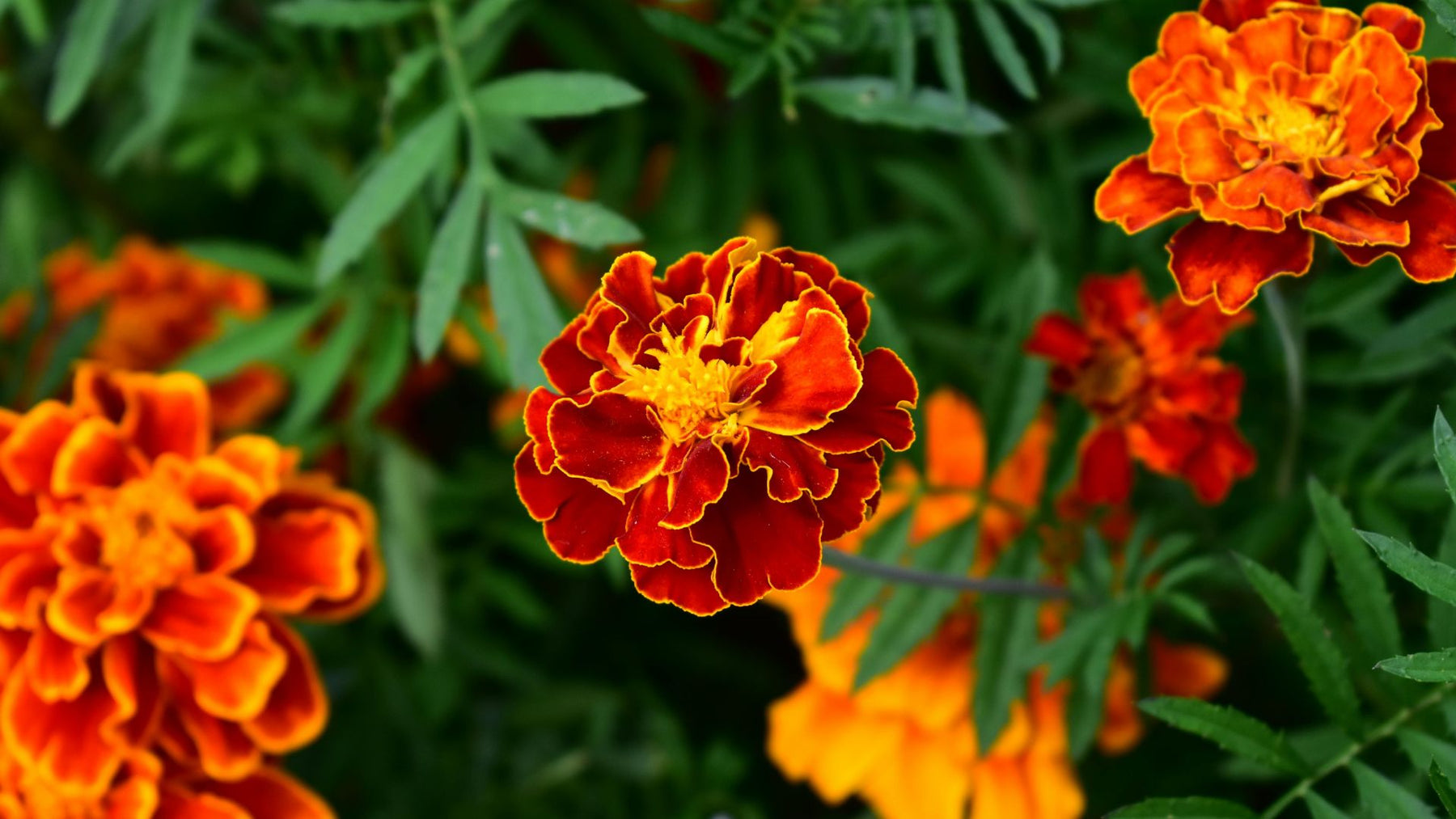
Marigolds in the garden
Marigolds are sunshine in floral form! At just a glance the sight of them will make you beam, showing off their beauty in vibrant variations of yellow, orange and red. These resilient beauties couldn't care less about weather drama or pesky pests—they thrive no matter what Mother Nature throws their way. Forget just looking pretty, these plants are useful in the garden, with a history rich enough to make even the most seasoned gardener gush about them.
How to grow marigolds
Marigolds can be grown across the country as a summer annual and the best time to roll out the marigold carpet is late spring and summer! As for their sun preference, well, let's just say they're not shy—they're all about that full sun life. Give them a spot in garden beds, borders or containers.
- Sow marigolds from seed or plant out seedlings.
- Work compost into your soil and make sure it is well-draining.
- Space them 15-20cm apart so that their leaves dry off after watering. This helps with preventing fungal disease.
- Cover them lightly with soil or vermiculite.
- Water deeply once or twice a week, provided it hasn’t rained.
- They will germinate within 4 to 7 days and bloom about 10 to 12 weeks after sowing.
Before you know it, you'll have marigold babies popping up like nobody's business. Oh, and don't forget to give them some breathing room—nobody likes a crowded house, especially marigolds. You won't want to deal with their version of a garden tantrum, aka rot, grey mould, or powdery mildew.

How to care for marigolds
When it comes to care, these glowing queens are absolutely low-maintenance. They're all about sunshine, a little organic fertiliser here and there, and a sip of water when they're feeling parched. Just remember, too much love (aka fertiliser) can spoil the party—less is more, people! You don’t want to kill them with kindness. Also, don't forget to give them a little trim now and then—they love a good haircut.
Marigolds in the vegetable garden
Marigolds are especially useful in the vegetable garden! You will want them in your veggie patch as they deter nematodes in the soil and flying pests. Talk about floral superpowers. Apart from being a natural pest deterrent, they are also edible and can be used in salads, to make herbal tea and decorate your food.
What is the cultural significance of marigolds?
Marigolds have got a backstory that'll knock your gardening gloves off. From their humble beginnings in the Americas to their European conquest, these plants have seen it all. The significance of the marigold flower differs among cultures, often representing purity, spirituality, and the intricate link between life and death. With their vivid hues marigolds hold a vital role in numerous global traditions, festivals, and ceremonies.
Marigold history
Now, let's talk about history. Calendula was once referred to as marigold until the Tagetes plant, originating from the Americas, arrived in Europe and claimed the name 'marigold' for itself. With over 50 species of marigolds strutting their stuff, you have options! Whether you're into African marigolds (Tagetes erecta) with their flashy double flower heads or French marigolds (Tagetes patula) with their sassy frills, there's a marigold for every garden diva out there. So go ahead, unleash your inner green thumb and let these floral powerhouses take centre stage in your garden!

